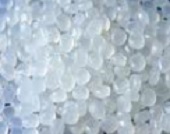 The second half of this year promises to be fascinating as increased polyethylene (PE) volumes are shipped out of the US. Buyers in Europe will welcome the alternate sources of supply in a market that remembers well the difficult times in 2015 when polymer was so hard to come by.
The second half of this year promises to be fascinating as increased polyethylene (PE) volumes are shipped out of the US. Buyers in Europe will welcome the alternate sources of supply in a market that remembers well the difficult times in 2015 when polymer was so hard to come by.
Currently, Europe is a low-price PE market so tonnes from the new US capacity and from the Middle East and India are likely to be shipped elsewhere, but additional volumes are expected to make their way to Europe in the second half. Markets in Latin America will be well served by the new capacities.
All eyes are on China and how important a market it becomes for players in the US. Its demand is pivotal and its ambitions in terms of the addition of significant new olefins capacity suggest that the China PE deficit picture could change fundamentally in the next few years.
Through 2019, however, the US will add 6.5m tonnes/year of new PE capacity. That’s a 42% increase. Through 2022, the increase will be 77%.
Shifting PE trade flows will be a feature of the industry for years. And while there has been so much talk about the likely impact of potential overcapacity, it is the dynamics of the change that are important.
Producers assume that global demand for PE will continue to rise at a healthy pace, outstripping GDP in emerging market economies and those in Asia, particularly, that are now well in deficit.
Not too long ago the fear was that a wave of new capacity in the Middle East would hit Europe’s polymer markets. China’s growth, particularly, saw to it that that was not the case.
NEAR-TERM OUTLOOK
It is better understood today that producers will adapt to changing market conditions and try to avoid the worst – the assumption being, nevertheless, that demand growth will keep the business out of the mire.
In the short term, this indeed does look as though it will be the case.
This is a seasonally strong period for PE, LyondellBasell CEO, Bob Patel pointed out in a conference call with financial analysts on 30 April. Annual growth is made in the first three quarters of the year and this year is looking typical.
With higher crude oil prices and stronger demand in Asia, PE demand for the company is going well, Patel added.
“We’ll have to see how Q4 develops, but until then it seems to me that this supply is coming just in time to meet the demand growth globally.”
The positive view, then, is that which was apparent at the start of the annual AFPM International Petrochemical Conference (IPC) in March. It was for a saucer-shaped dip in the cycle as the new capacities are absorbed by the market. Longer term, however, the fundamentals could play out very differently.
Producers have had time to build multiple channels to market and to build a value proposition in different geographic markets for the grades of PE they are and will be producing.
US PE EXPORTS TO EUROPE
When asked about the potential for PE exports to Europe, LyondellBasell’s Patel said that the company could export its branded Hyperzone high density polyethylene (HDPE) to Europe and it could be the product that many customers will want.
Looking at the market potential from a technology and from a value to the customer point of view, therefore, creates a slightly different picture of the shifting supply and demand fundamentals.
Producers will look on opportunities on a production asset by production asset basis but the US ethane advantage currently is very close to that in the Middle East. This puts production assets in higher cost locations, such as western Europe, under pressure.
Europe will need between 300,000-500,000 tonnes/year of additional polymer volumes to match demand growth of 2%-3% a year, delegates to the ICIS World Polyolefins conference in Vienna, Austria were told last week.
There will, therefore, be demand for imports.
Most PE coming from the US will flow to China, but European PE producers will need to “change focus” towards more differentiated polymers, according to Rob Ingram, business director at INEOS Olefins & Polymers, in order that they can grow amid the wave of new US capacity.
